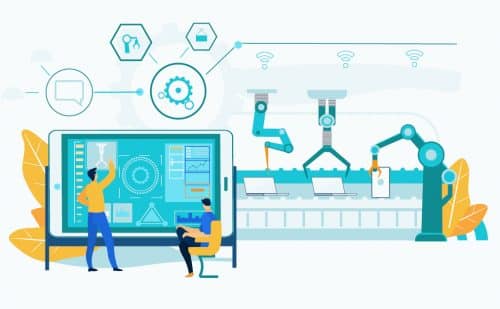All types of innovations have a place in business and economy. Having the right balance is important for all of them. The good thing here is, when you have cash and jobs released from efficiency innovation, you can turn those jobs and cash towards disruptive innovation.

About the same time during the last year my kids were at home, courtesy school holidays, and were on the verge of being slammed by boredom. In the quest for entertainment my son and I decided to play chess.
For the first game I used simple tactics and, obviously, won. In the second round, I tried to make it difficult for him to win. He improved his game too, but eventually lost. The third time, I used even better tactics while he too raised his game. Yet, I won the third game too.
Before we could begin the fourth round, he said, “Let’s play something else.” Then he brought Snakes-n-Ladders, a game that levelled the playing field for both of us as we continued.
The disruptive innovation myth
One of the famous quotes that are making circles in the industry is, “Uber didn’t kill the taxi business; limited access and fare control did!” People often use this quote to signify how disruptive innovation happens. Although somewhat cliché, let us roll with it. With this type of quote, a typical response I have seen comes in two ways.
One camp of CXOs strongly believes that the right amount of incremental innovation can beat that level of disruptive innovation. They remain confident that incremental changes eventually pile up and can result in a big meaningful change. If you do all these small incremental changes you can fix many problems and stay on top.
The other camp, however, believes that incremental is not the best way to go. Instead, they prefer the disruptive innovation playbook, which in my view is neither enough nor sustainable. Before I explain why it is so, let us understand the other kinds of innovations and how they affect capital or the economy in general.
Companies have followed mostly three types of innovations for many decades. Most CXOs are often focused on only the first two types, whereas the third type has radically affected many industries. I will also introduce you to the fourth type, which can help you change the game.

Three types of innovations
In his seminal work, ‘The Innovator’s Dilemma,’ Clayton Christensen has discussed the three primary forms of innovation. Borrowing from that idea, let me explain the first three types of innovations and their impact on jobs, capital, and the economy.
We are looking at these innovation forms from a capital and job perspective for one key reason. These are the two important aspects that often and significantly affect the economy. More jobs or more available capital will lead to a drastically different market or economy than one with fewer jobs and restricted capital.
Incremental innovation. Incremental innovation is best defined as good-getting-better. The product or service does not change significantly. Only a smaller portion of it, feature or function, improves. It only helps in marginally improving customer experience and (or) the business bottom-line. Due to the nature of incremental innovation and its magnitude, it does not affect the job market. Moreover, there is no impact on capital, or cash-flow, for the business or the market in general.
If you look carefully, almost everyone is doing it. Without even realising it, most of us try to get better at what we do, bit-by-bit. So, it has become part and parcel of business and human life as such.
Efficiency innovation. Most of the transformation projects in business are geared towards this type of innovation. Whether your business is on the digital transformation journey or any other kind, the goals will likely dictate efficiency improvement.
By definition, efficiency means output divided by input. It means businesses want to increase the output or stay at the same level by reducing the input.
The input for any business comes in many different forms. It could be workforce, raw material, natural resources, money, machinery, parts, time to perform the work or produce output, and many others. So, when businesses want to improve efficiency, they are looking to reduce one or more of those inputs while increasing the output as much as possible.
Essentially, it means you want to have fewer people doing the same things, less material to produce the same thing, or to spend less time in production or service delivery. This more often means job losses or significant displacements. But by using lesser input, the business can free up the capital tied in those resources. This freed-up capital or cash-flow can then be utilised for other purposes.

Disruptive innovation. This type of innovation has remained the poster-boy of all innovations until now. Disruptive innovation in the real sense means making a product or service democratised, so that more and more people can use it. It often means businesses need to produce more products or need to deliver services to more customers.
It almost always results in needing more people to do the job and, therefore, it results in more jobs. However, business needs more capital to produce, perform, and hire more people. Disruptive innovation, in the ideal sense, creates more jobs and ties up a lot of capital.
EFY++ CONTENT: ACCESS TO THIS CONTENT IS FREE! BUT YOU NEED TO BE A REGISTERED USER.
Oops! This is an EFY++ article, which means it's our Premium Content. You need to be a Registered User of our website to read its complete content.
Good News: You can register to our website for FREE! CLICK HERE to register now.
Already a registered member? If YES, then simply login to you account below. (TIP: Use 'forgot password' feature and reset and save your new password in your browser, if you forgot the last one!)






